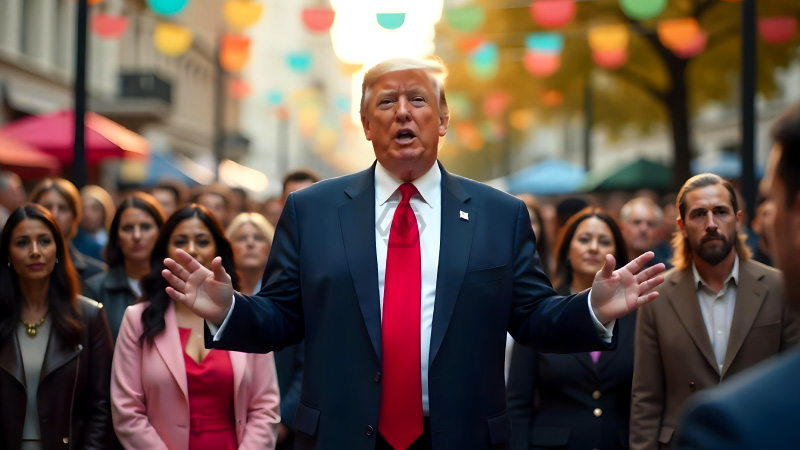- Trump describes his speaking style as “the weave,” emphasizing intentional shifts and returns to main ideas.
- Media critiques of his speeches as rambling frustrate Trump, who sees it as a sign of intelligence.
- Trump argues his approach demands memory and focus, challenging negative perceptions.
Donald Trump has recently coined the term “the weave” to describe his unconventional speaking style, marked by abrupt changes in topic and intricate tangents.
According to those familiar with Trump’s perspective, he views “the weave” as a sign of mental agility, requiring sharp memory to return to the main point after branching into different subjects.
Inside Trump’s “Weave”: The Art of Tangents and Returns
Trump’s “weave” is more than just a new term; it’s an intentional recasting of his public speaking style as sophisticated rather than erratic. By framing his frequent shifts in focus as evidence of a sharp, adaptive mind, he aims to dispel accusations that he’s merely rambling. This reframing allows him to assert that his speeches, however meandering they may seem, are held together by a deliberate technique that takes advantage of his memory and intuition.
In recent months, Trump’s speeches have drawn attention for their seemingly disconnected points, which often jump from policy to personal anecdotes to critiques of political rivals. This pattern, once criticized as disjointed, has now become part of Trump’s messaging strategy. He sees “the weave” as a flexible way to connect with audiences on multiple levels, showing a rapid-fire, real-time thinking process that demands his listeners keep up.
Those who know him describe Trump as confident in this style, viewing it as both unique and original in the political arena. While some critics point to its chaotic quality, supporters argue that “the weave” offers a rare authenticity, reflecting Trump’s willingness to speak off the cuff. Whether seen as disorienting or energizing, his audience is rarely passive, with reactions running from bemused to deeply engaged.
Ultimately, “the weave” may serve Trump’s narrative that he is different from other politicians who rely on scripted, polished speeches. By embracing this unconventional method, Trump reinforces his image as a rule-breaker who redefines norms. It’s a polarizing approach, yet it speaks to his desire to connect with audiences on his terms, a technique his supporters find refreshing in an era of curated, carefully crafted messaging.
Trump’s “weave” is a defining element of his public persona, one that reflects his view of leadership as spontaneous and instinct-driven. While the technique divides opinions, it unmistakably marks his speeches as his own, leaving a lasting impact on the way political figures communicate.
“I call it ‘the weave. And some people think it’s so genius. But the bad people, what they say is, ‘You know, he was rambling.'”



